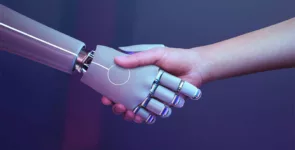OpenAI’s old board of directors made a huge mistake and nearly destroyed the company. Had it not been able to reverse that position, the resulting litigation would have likely destroyed each of the board members, showcasing how incredibly foolish their decision was.
But now OpenAI is a wounded company. There’s a cloud of distrust both internally and externally that will need to be overcome, a new Board selected and the brand recovered.
Let’s talk about how that can be done.
Building a New Board of Directors
Boards are often taken for granted and are poorly staffed by people that are either unqualified or are unable to work with each other. The result is a company that underperforms. OpenAI’s past board was both too small and made up of people who didn’t understand their role which is to prioritize the health of the company over nearly all else. They also clearly didn’t understand the potential liability that goes with the role.
In building a new board for OpenAI (now expected to be a more diverse nine-member group), care should be taken to assure that each of the major potential customer groups are represented by board members (retail, pharma, legal, government, manufacturing, marketing, sales, military and healthcare). Each should also have some background in AI as applied to their individual industries as they will then be better able to assist the CEO in their efforts to grow the company.
The government-focused member must be influential and, much like Al Gore did for Apple, not provide insight into the unique needs of government so much as have influence with government so that any resulting legislation doesn’t adversely impact the company.
In addition, board members should not be selected based on personal fame but on their competence and willingness to collaborate to reach common solutions. Too many boards tend to be made up of people who want to lead but not follow, making them functionally unable to perform their critical duties.
The chairman of the board should either be one of the founders of the company or be someone with mediation experience so that they can help the board drive collaborative conclusions. To keep with the times, the board should also be diverse, but diversity shouldn’t take the place of competence and the willingness to collaborate.
Rebuilding Trust
Trust is hard to create, easy to lose and very difficult to recover. Part of rebuilding trust will be to make the board and executive team visible and to ensure there are no other major mistakes made by either company leadership or the board. In addition, OpenAI should staff a marketing function if only to take stronger control over the firm’s public image and to dispel any lingering doubt that the firm can execute.
AI is an incredibly competitive environment. If trust isn’t restored, employee turnover and customer defections will be high, and the firm’s competitive position as a market leader will erode rapidly in the face of firms that appear to have their act together.
Appear is the operative word here. The sooner OpenAI “appears” to have its act together again, the sooner any bleeding of employees or customers can be arrested, and the firm returned to its growth trajectory.
People are connecting the brand to the recent drama, which is creating doubt about OpenAI’s future. Restoring the brand as the fastest growing AI company would significantly increase the probability that the firm will return to that prior success.
Wrapping Up:
Open AI is the current leader in generative AI which is the current hottest AI category. However, competition is fierce, and the past board temporarily crippled the company. But this has created an opportunity to create a stronger board, a better defended brand, and to actively work on restoring and sustaining trust with marketing.
The company is well funded. If it can create a larger, more diverse and collaborative board and build a marketing program that can better husband OpenAI’s image, there is no reason why the company can not only return to its prior growth trajectory but exceed it.
Now it is just a question of execution.








